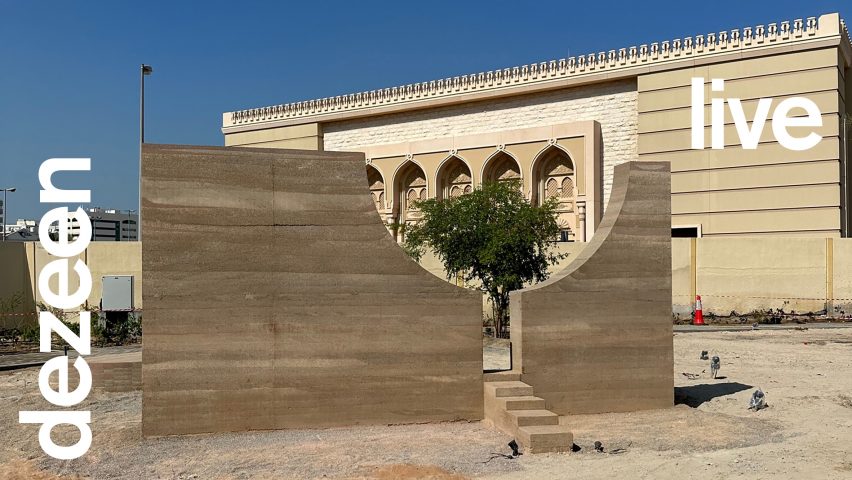
Preview day from Sharjah Architecture Triennial 2023
The Dezeen team are reporting live from the preview day of the second edition of Sharjah Architecture Triennial 2023 in the United Arab Emirates (opening 11 November). Follow for updates throughout the day, with exclusive previews of installations and exhibitions.
5:30pm This is Dezeen editor Tom Ravenscroft signing off from the preview day of the second Sharjah Architecture Triennial, curated by Tosin Oshinowo, which opens to the public in the United Arab Emirates tomorrow, 11 November, and runs until 10 March 2024.
Featuring more than 30 exhibitors the goal of the festival, Oshinowo told Dezeen, is to "make the Global South realise and re-evaluate itself, and optimistically position that we're not in a bad place".
Find out more about the triennial in the Dezeen Events Guide, which features all the latest information you need to know to attend the event, as well as a list of other architecture and design events taking place around the world.
5:00pm Alongside the market, Kenyan studio Cave Bureau has converted a still-functioning slaughterhouse into the ninth edition of its Anthropocene Museum.
"We have been traversing around the world curating the museum of anthropology," explained studio co-founder Kabage Karanja. "We reverse the future by looking at buildings that have almost been forgotten."
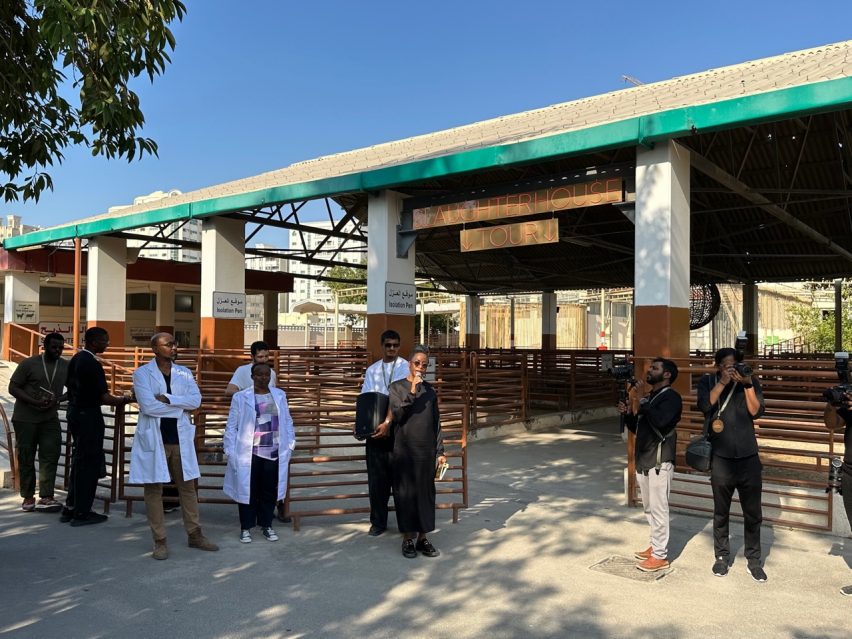
"We have welcomed artists and creatives to be in the museum, so you will be walking through a working slaughterhouse but also a museum. It highlights consumerism. We are products of consumerism."
On the tour, visitors travel the route that the animals take, first entering the pens then travelling up a ramp into the slaughterhouse.
"At the end of the tour I hope you rethink your consumerism," added Cave Bureau co-founder Stella Mutegi.
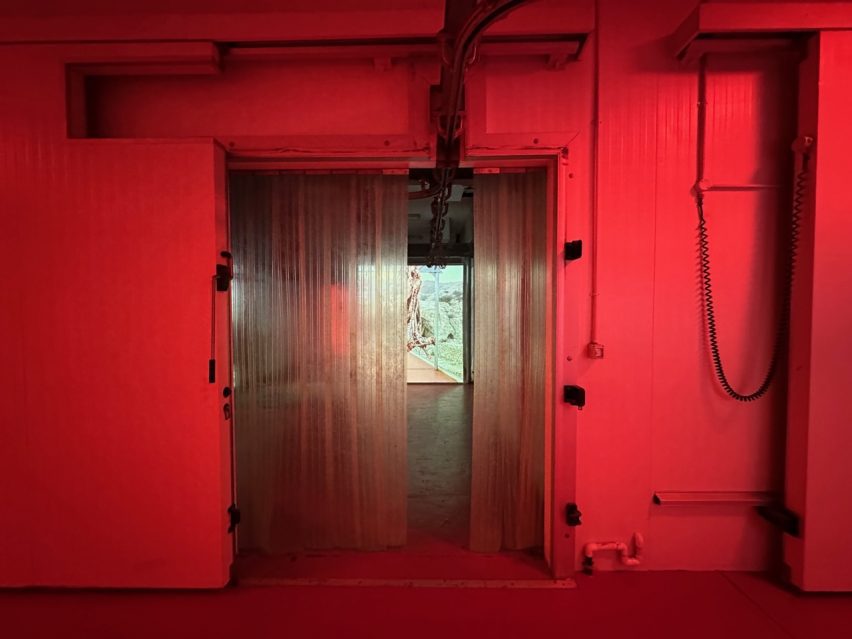
4.30pm Also in the market, multi-discipline designer Miriam Hillawi has built a Himalayan salt block facade in front of one of the former shops.
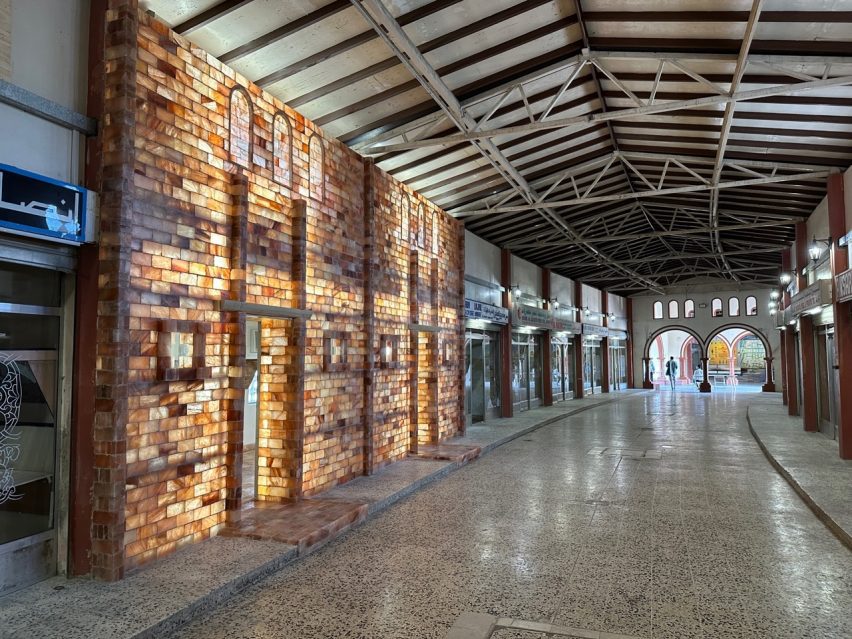
The facade has been designed to evoke medieval churches of northern Ethiopia.
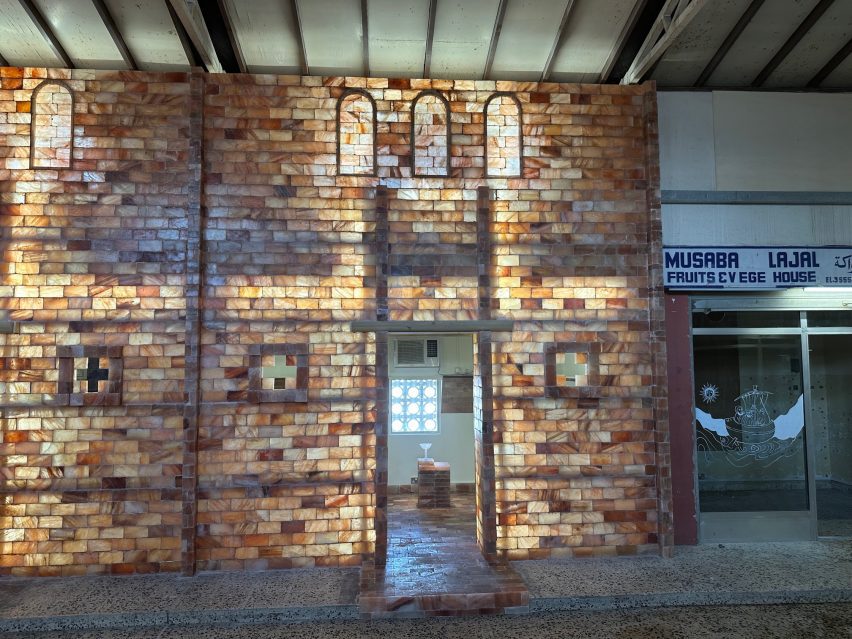
4:00pm Designed to evoke the essence of a guardian spirit, Lagos-based fibre artist and fashion designer Bubu Ogisi created a series of video installations surrounding a central, enclosed, tent-like space.
Through a space featuring fringed textile panels and sculptural shapes, visitors are invited to walk across a gravelly cinnamon floor that releases the smell of the fragrant bark in the process.
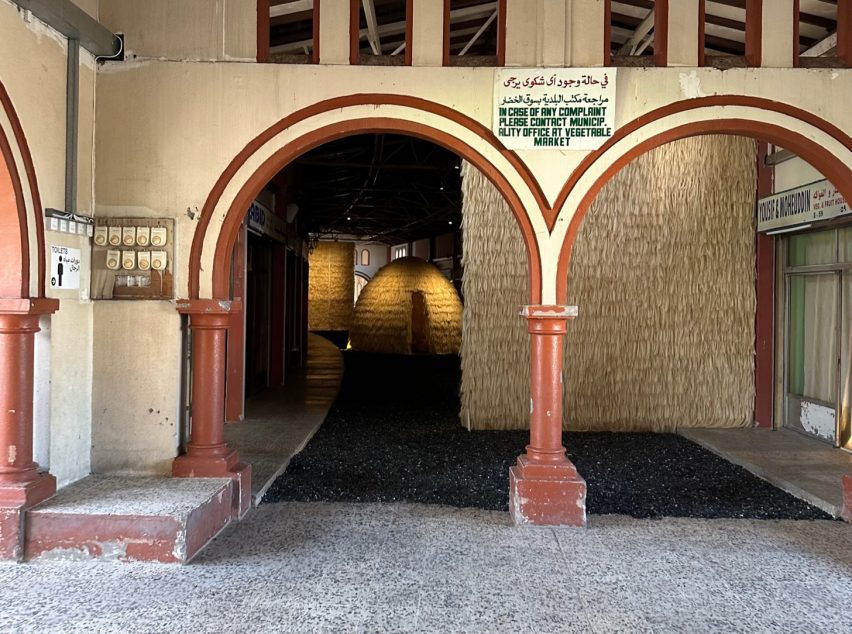
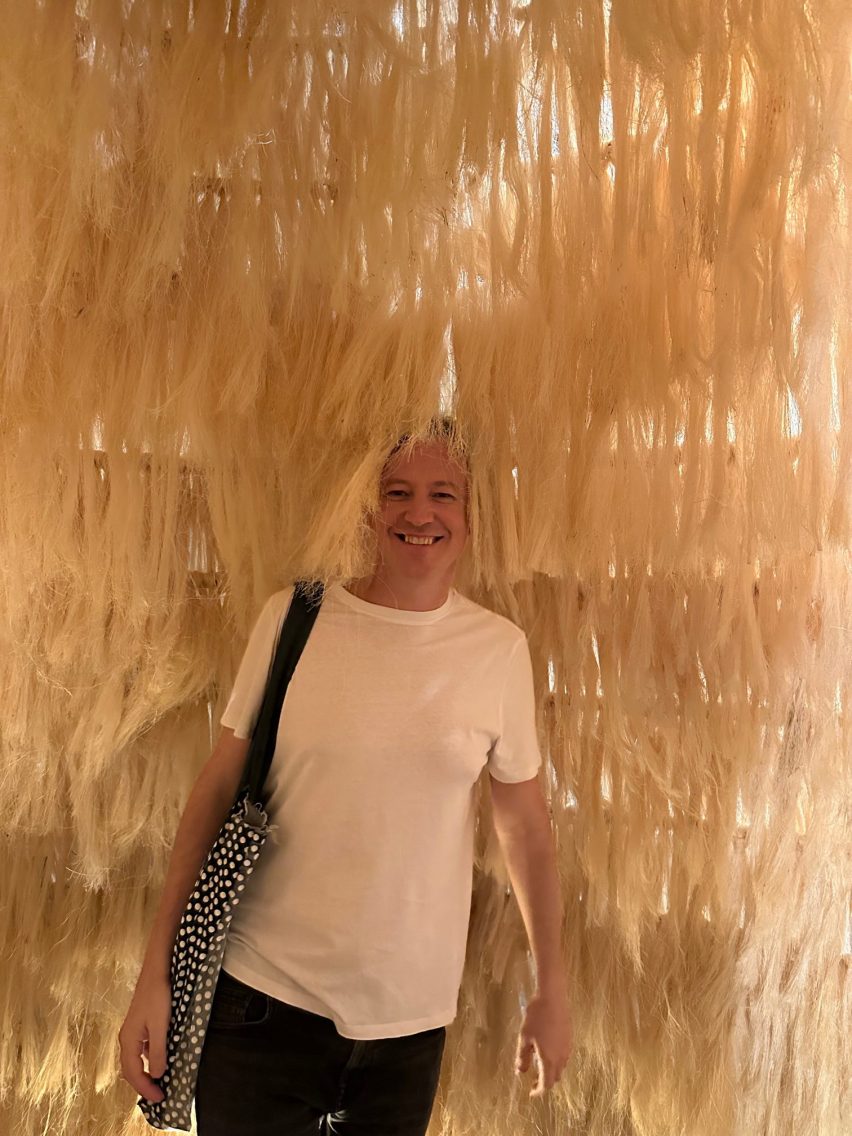
3.30pm Within the main hall of the market, French designer Thomas Egoumenides aims to challenge traditional design practices by creating an installation from discarded thread spools and threaded rods.
Named The Ship of Theseus, the installation forms a maze-like structure with tables and seats that visitors can walk through.
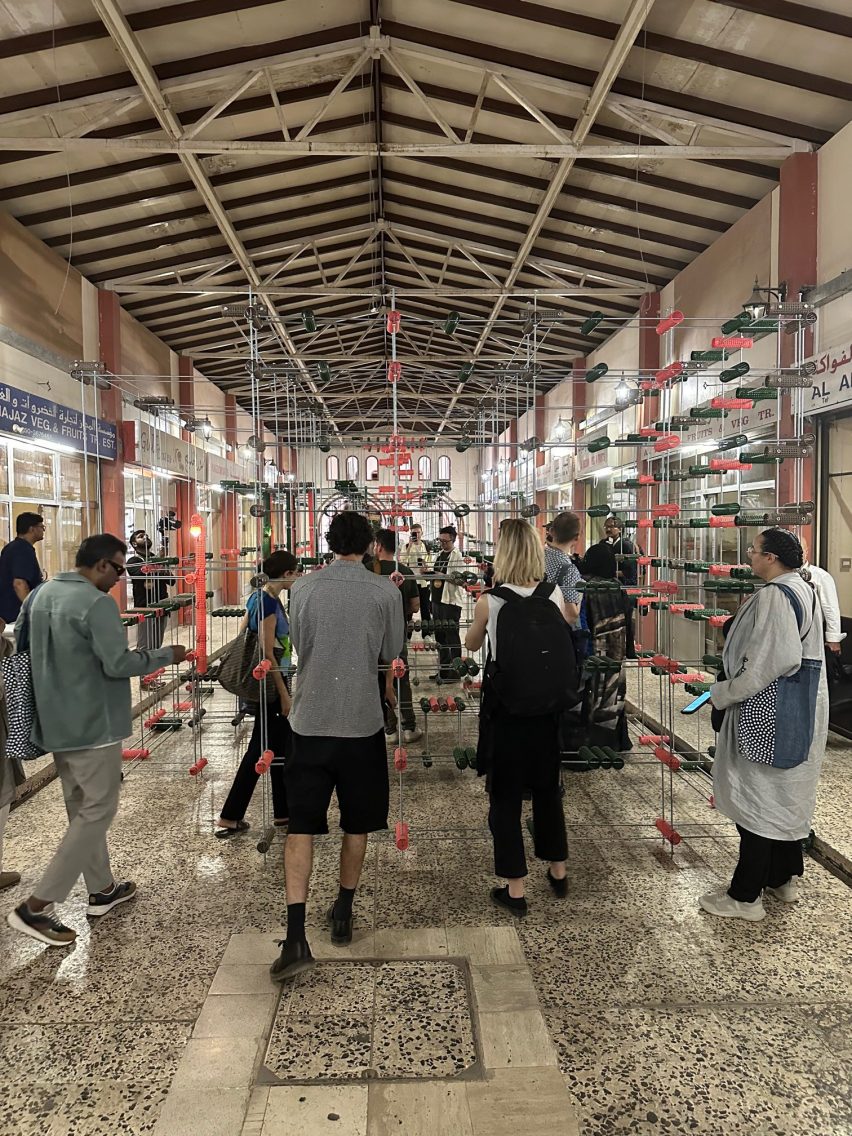
In each of the former shops alongside the main hall, Egoumenides displayed lamps also made from thread spools.
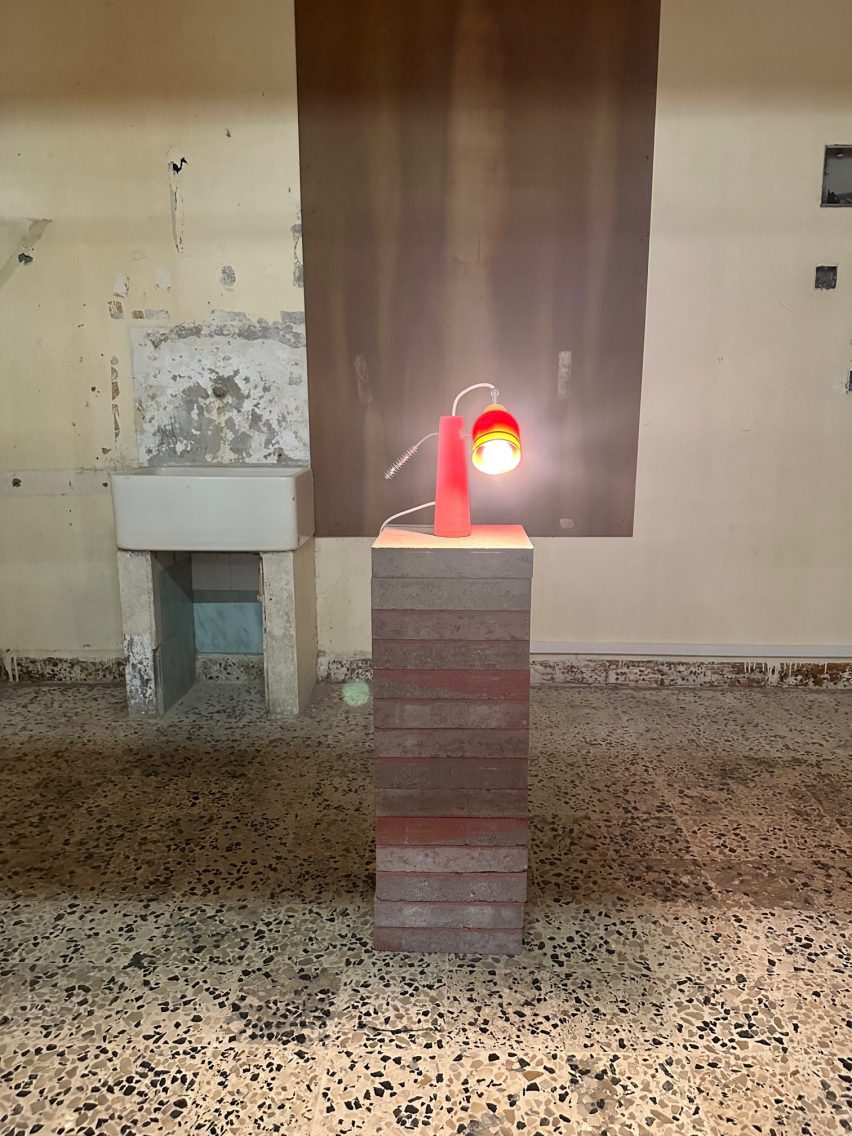
3:00pm Also outside the venue, Peruvian studio 51-1 Arquitectos have installed four giant flags that spell the word play and a series of lime green canopies and chairs. The studio hopes to reanimate the space, which used to be a bustling area before the market closed.
On each of the tables is a board game, many of which originated in the region, and people are encouraged to stay and play.
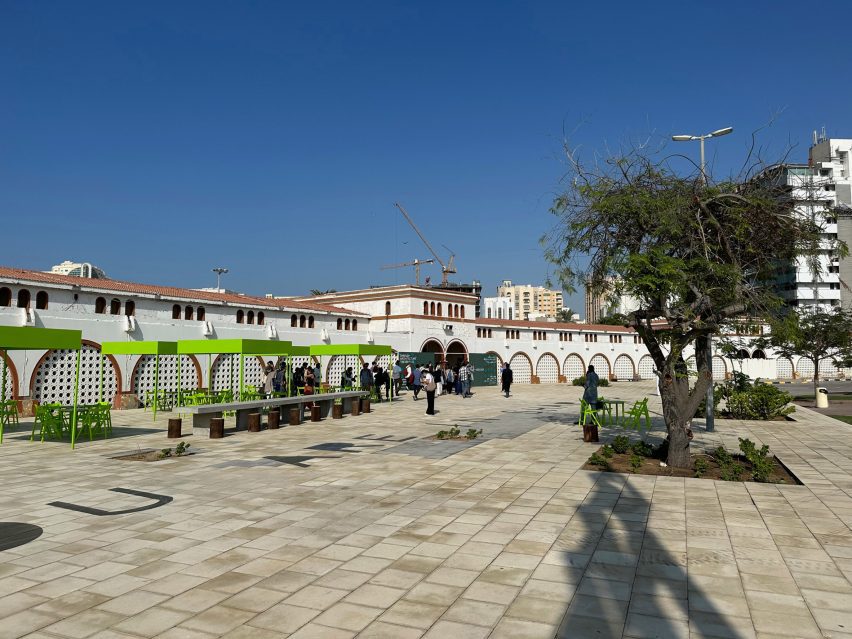
"We wanted to activate this entirely dead space," studio co-founder Manuel de Rivero told Dezeen. "We tried to laminate the space that, for many, is the entrance to Sharjah."
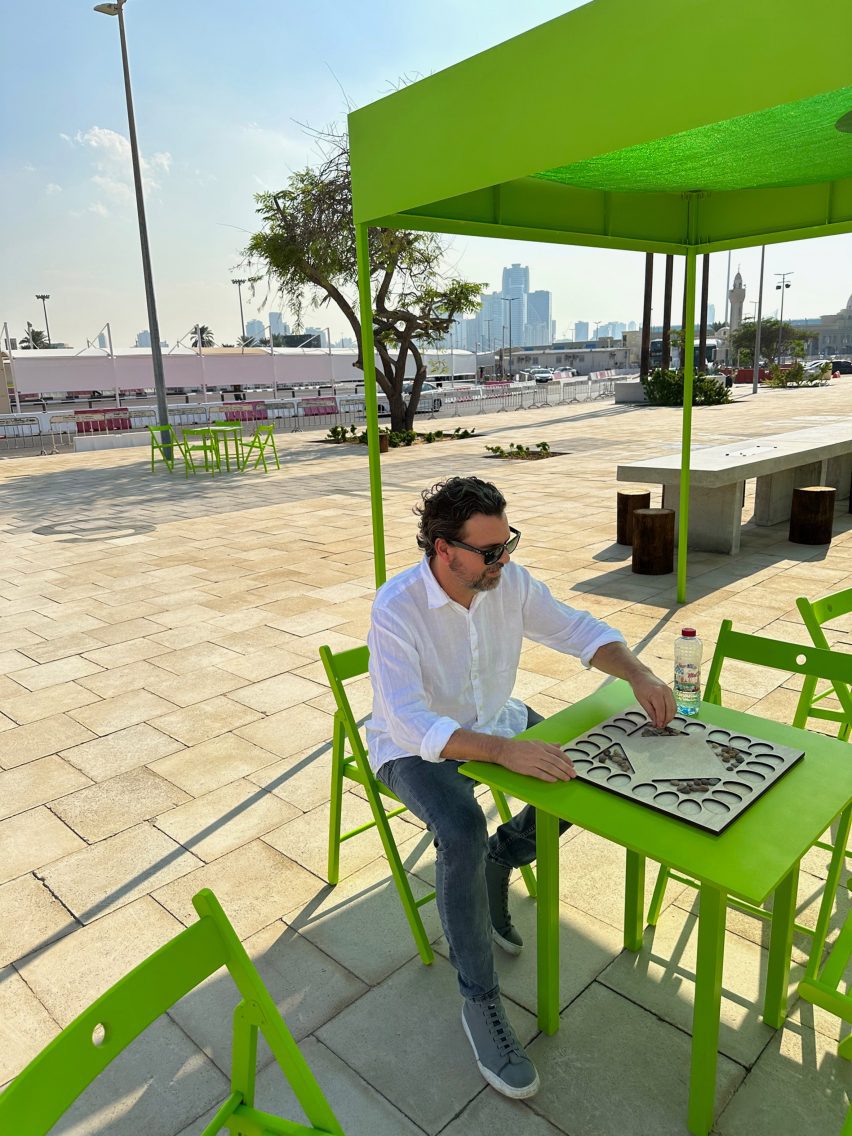
2:30pm The second of the triennial's main venues is a former fruit and vegetable market that was built in the early 1980s. Alongside the market, Rúina Architecture has built a viewing tower, which is not yet complete and still under construction.
Built from scaffolding, the tower aims to make a connection between the building and the sea, which until the early 2000s came close to the market. Since then this land has been reclaimed.
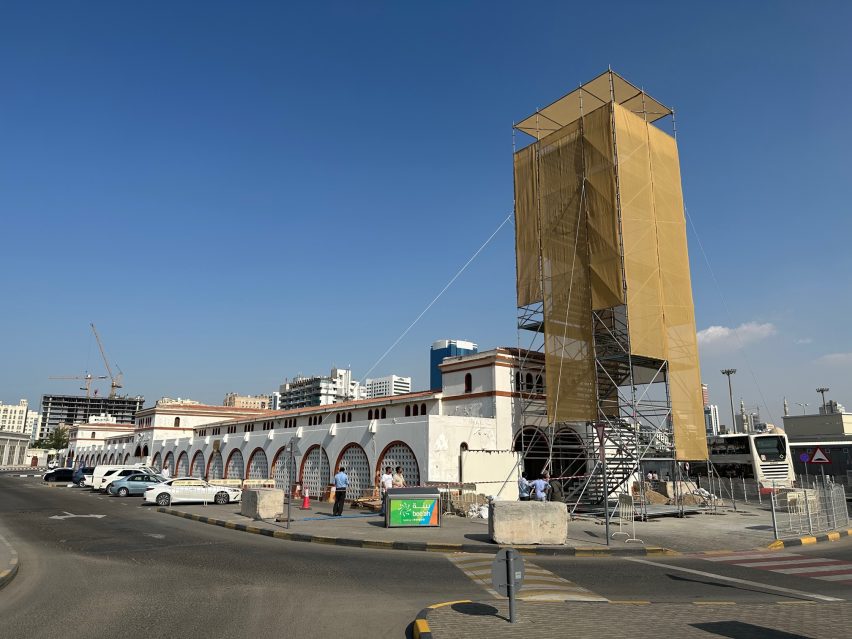
2:00pm A continuation of the Tashkent modernism project, for the Sharjah triennial the Art and Culture Development Foundation of the Republic of Uzbekistan have created a series of half-scale models of Tashkent buildings.
Architect Wael Al-Awar squeezed the models into one of the school's former classrooms, with the aim of questioning how these Emirati buildings are being renovated.
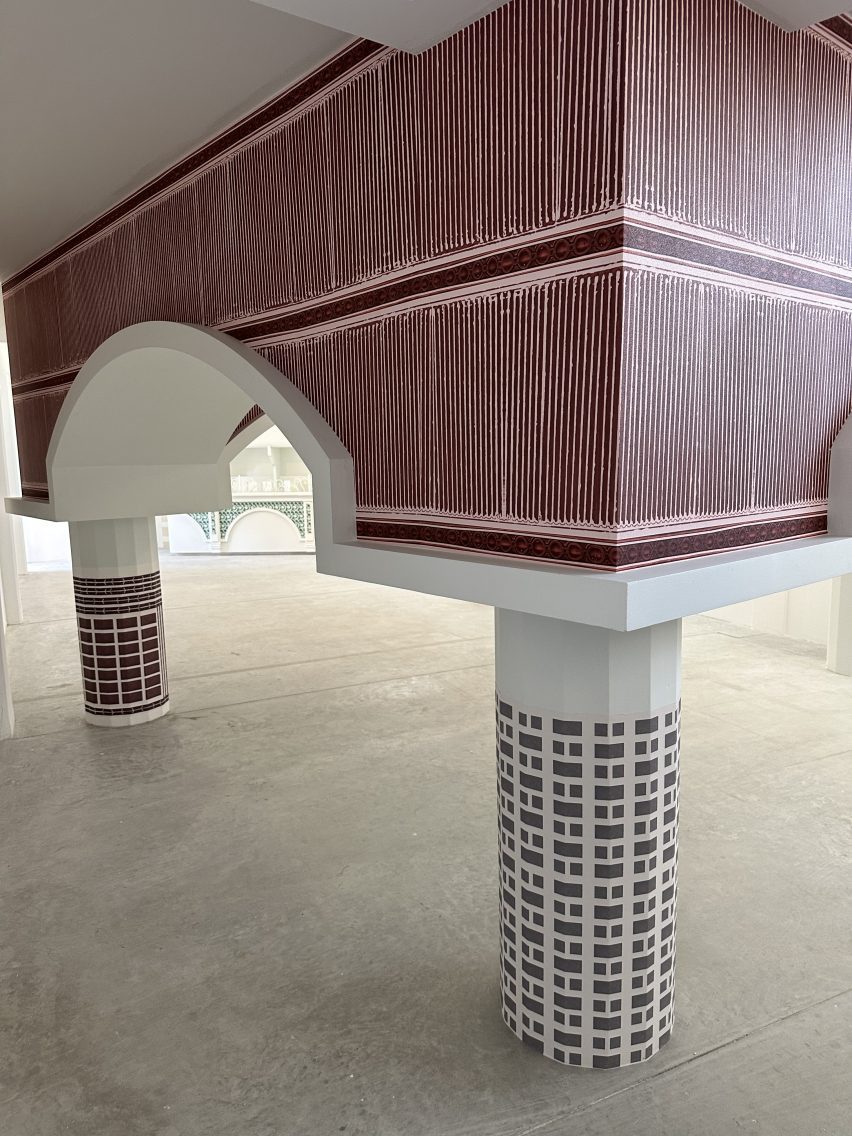
1:30pm Ecuadorian architecture studio Al Borde has created a giant canopy alongside the Al Qasimia School, as part of a strategy to connect the venue to the city via a new pedestrian access to the north of the site.
The studio wanted to create the entire structure from found materials and usually works in timber, which is not widely available in the UAE.
"We wanted to take risks together," said Al Borde.
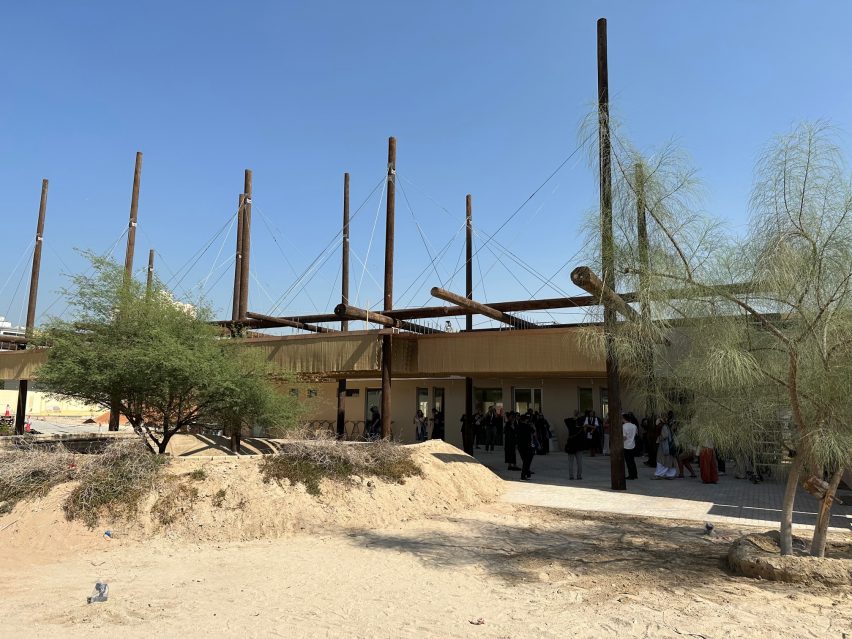
Named Raw Threshold, the structure was made from timber poles sourced from the Sharjah Electricity, Water, and Gas Authority (SEWA), which has removed the utility poles from the city to replace them with metallic ones.
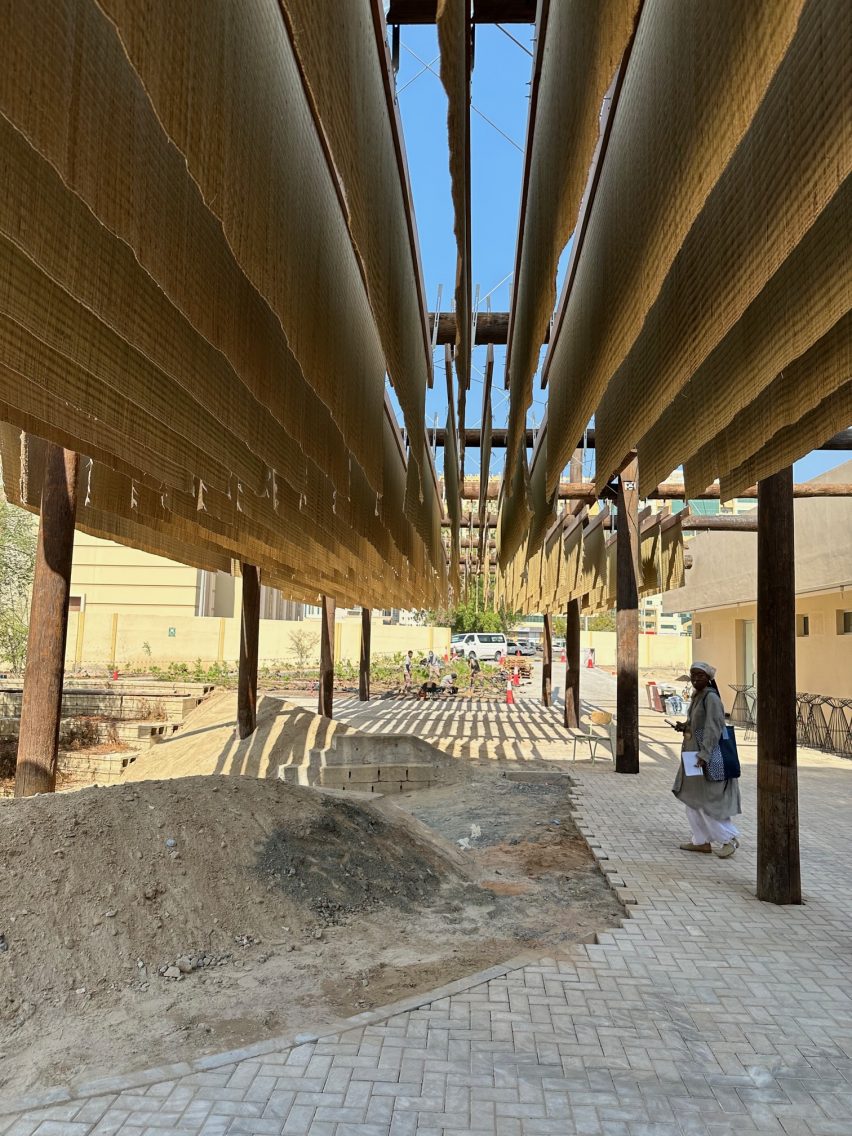
1:00pm Quick break for lunch at the Sharjah Art Foundation's headquarters in the renovated centre near the waterfront – Tom Ravenscroft
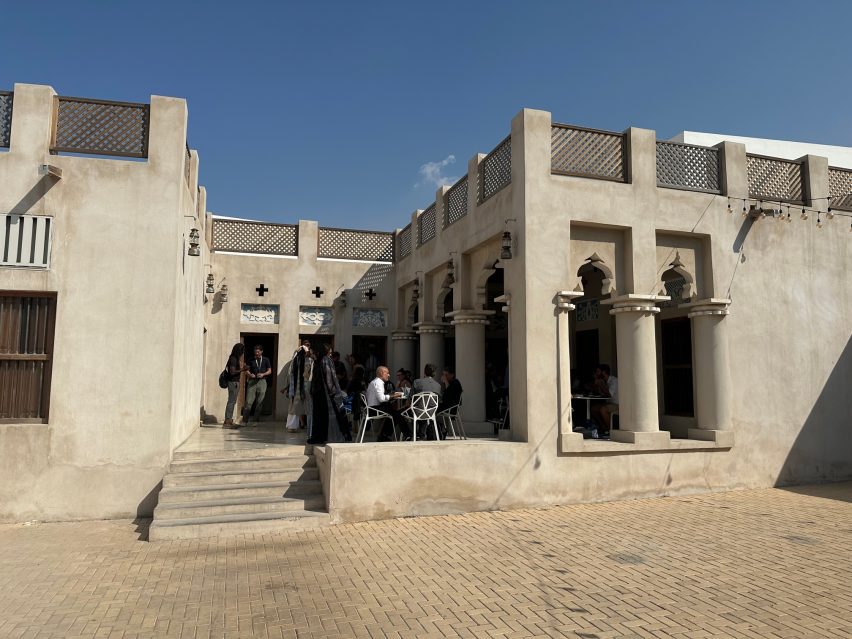
12:30pm At the opening of the triennial, the president of Sharjah Art Foundation and director of the Sharjah Architecture Triennial, Hoor Al Qasimi, explained the decision to continue with the event during the current conflict in Palestine.
It has been a very hard time to focus, we're all broken
"Me and my brother co-founded the foundation before he passed in 2019, and both of us were very vocal in our support for Palestine, unwavering support – so I think of him at this time," said Al Qasimi.
"I would like to say that we think of our Palestinian brothers and sisters who have been in our hearts for generations. It's not about now, it's about always. So we have to keep going and we have to create a safe space for people to come together."
"The foundation has always had a mission of creating space for experimentation for artists and designers from all walks of life, all over the world – giving them a voice, and especially in creating a platform for the voiceless. Having the space of solidarity is so important," she continued.
"You could think of different parts of the world being so disconnected, but at the root of it we all share the same causes – we all want to breathe air, we all want to be clean, and we all want our freedom."
"I appreciate everybody being here. It has been a very hard time to focus, we're all broken. We're all having sleepless nights. But at the same time, we want to know that this is the space of solidarity, the space for peace," she continued.
"We have a responsibility to use our voices, to use our creativity, to think of solutions and to do so together."
12:15pm Dezeen editor Tom Ravenscroft has interviewed Sharjah Architecture Triennial 2023 curator Tosin Oshinowo.
"The triennial is looking at the under-celebrated building innovations and designs that tend to still exist within the Global South and that result from conditions of scarcity," Oshinowo told Dezeen.
Read the full interview here ›
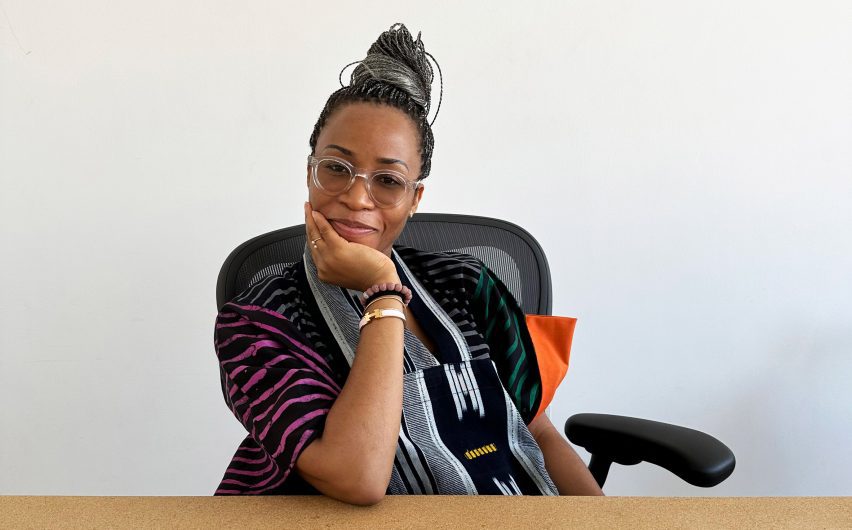
12:00pm Architect Yussef Agbo-Ola of London-based, environmental design practice Olaniyi Studio has created a temple-like pavilion as a place of sanctuary, in one of the former classrooms of the renovated school.
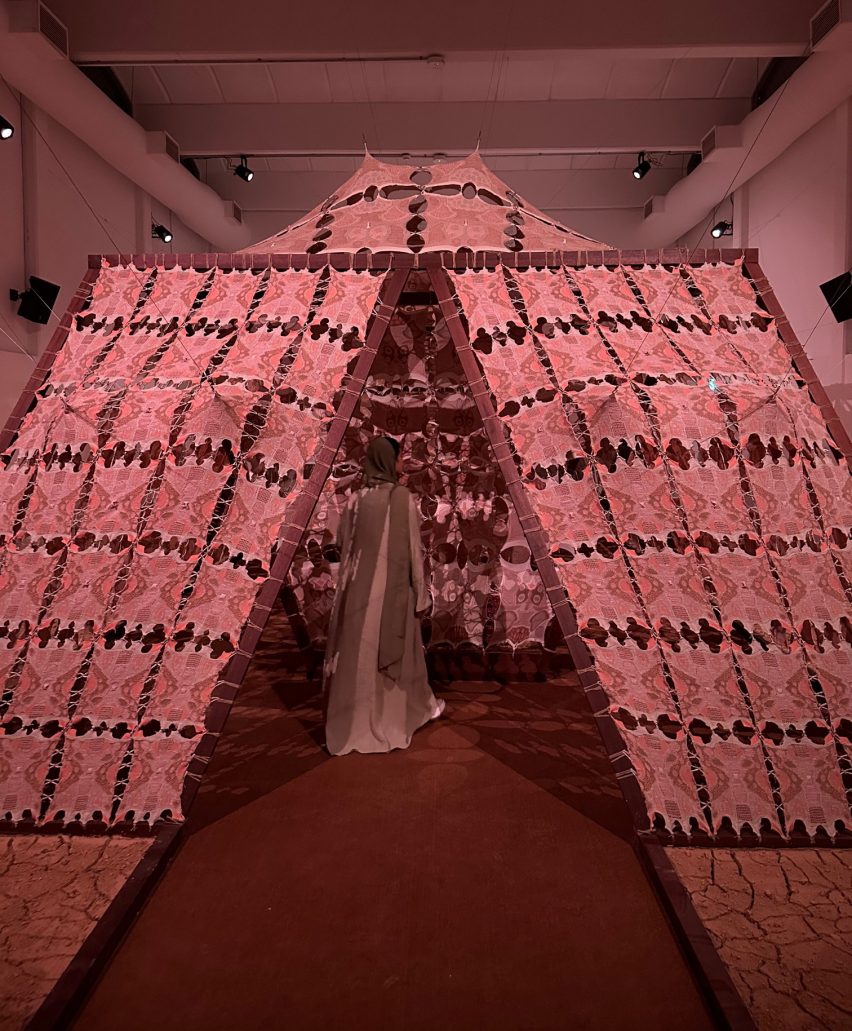
The peaceful installation has been a favourite hide out for the workers building the triennial's installations.
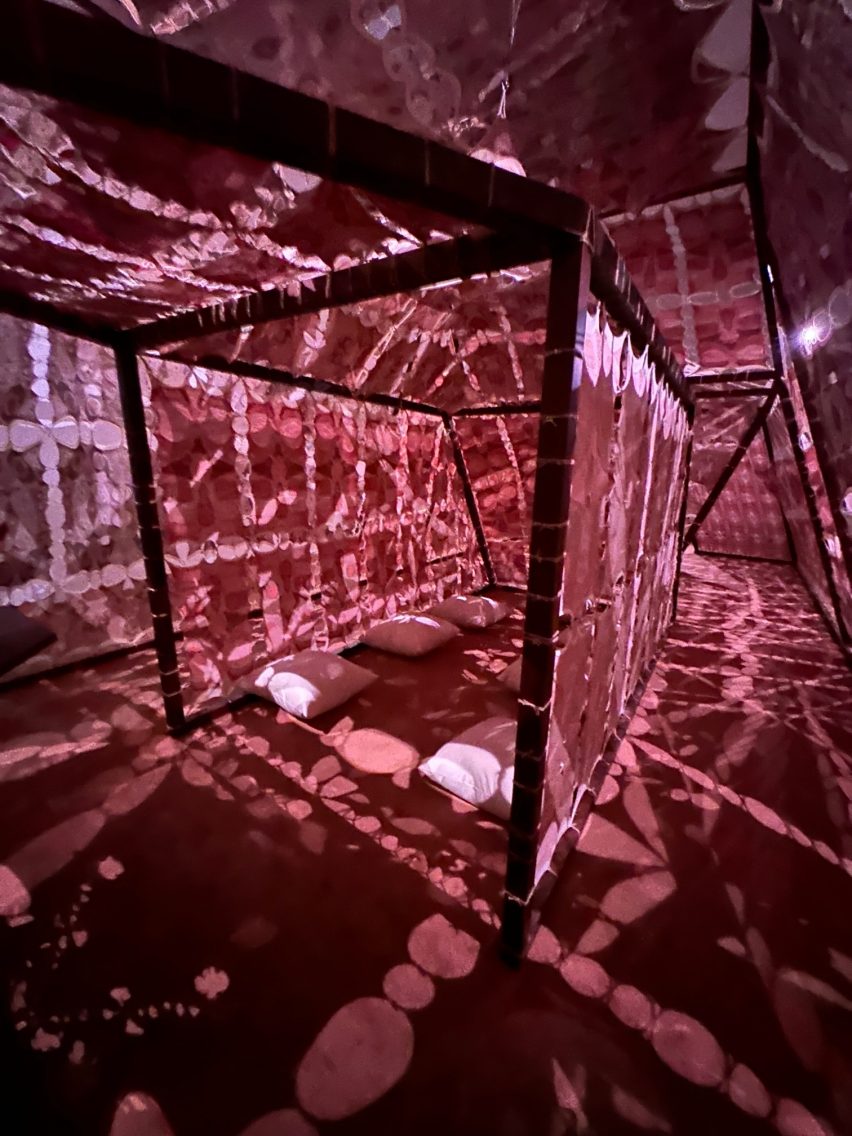
11:30am Ghanaian studio Hive Earth have created a sculptural, rammed earth pavilion in the grounds alongside the school.
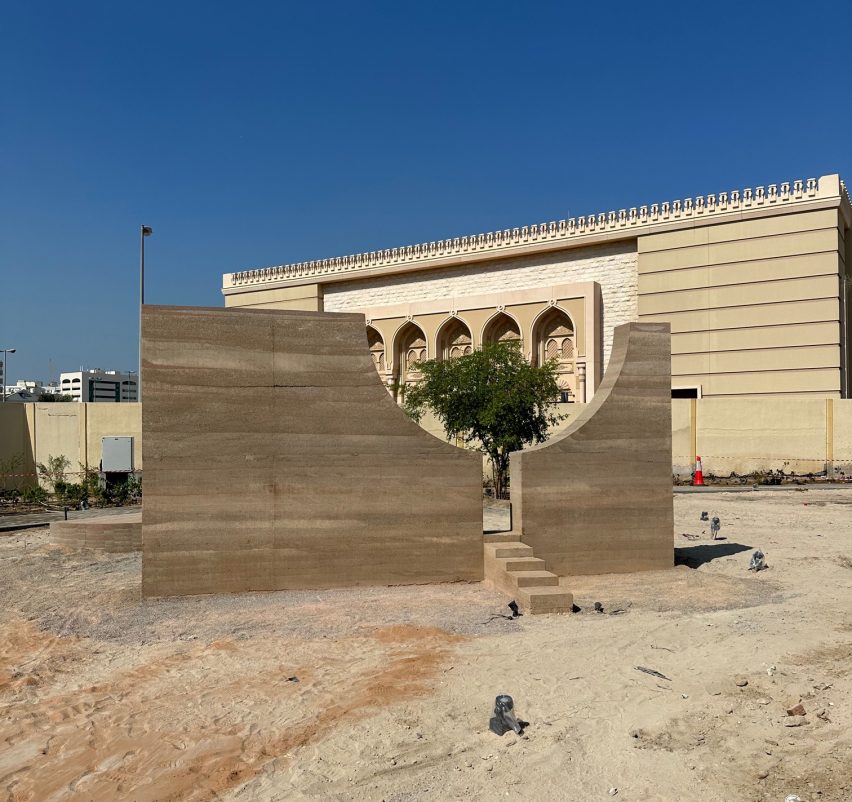
Named Eta'Dan, which is fante for mud wall, the pavilion was designed as a place to sit, rest and play. It was constructed from earth found across the UAE that gives it a coloured stratification.
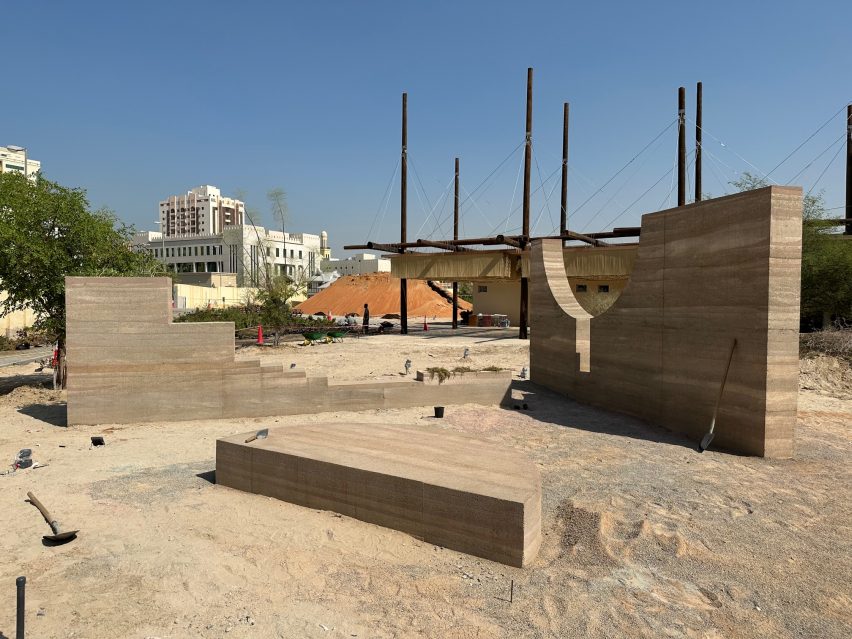
11:00am UAE-based, Saudi architect Sumaya Dabbagh's pavilion, named Earth to Earth, was constructed from mud bricks that were cast in the sun.
With the pavilion she aims "to draw attention to the collective memory of earth".
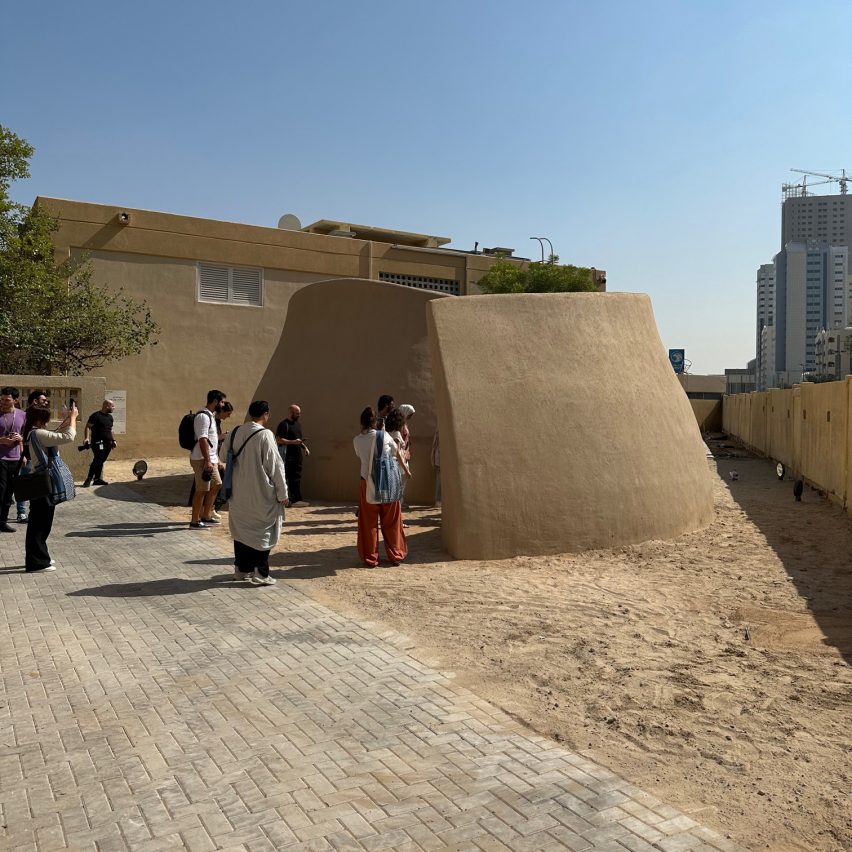
"The region is quite young, but in recent memory there was connection with the land and in a short time this was lost," explained Dabbagh.
The pavilion for the Sharjah Architecture Triennial 2023 is about "emphasising the relationship we have with the land – and we need to reconnect to that," she continued.
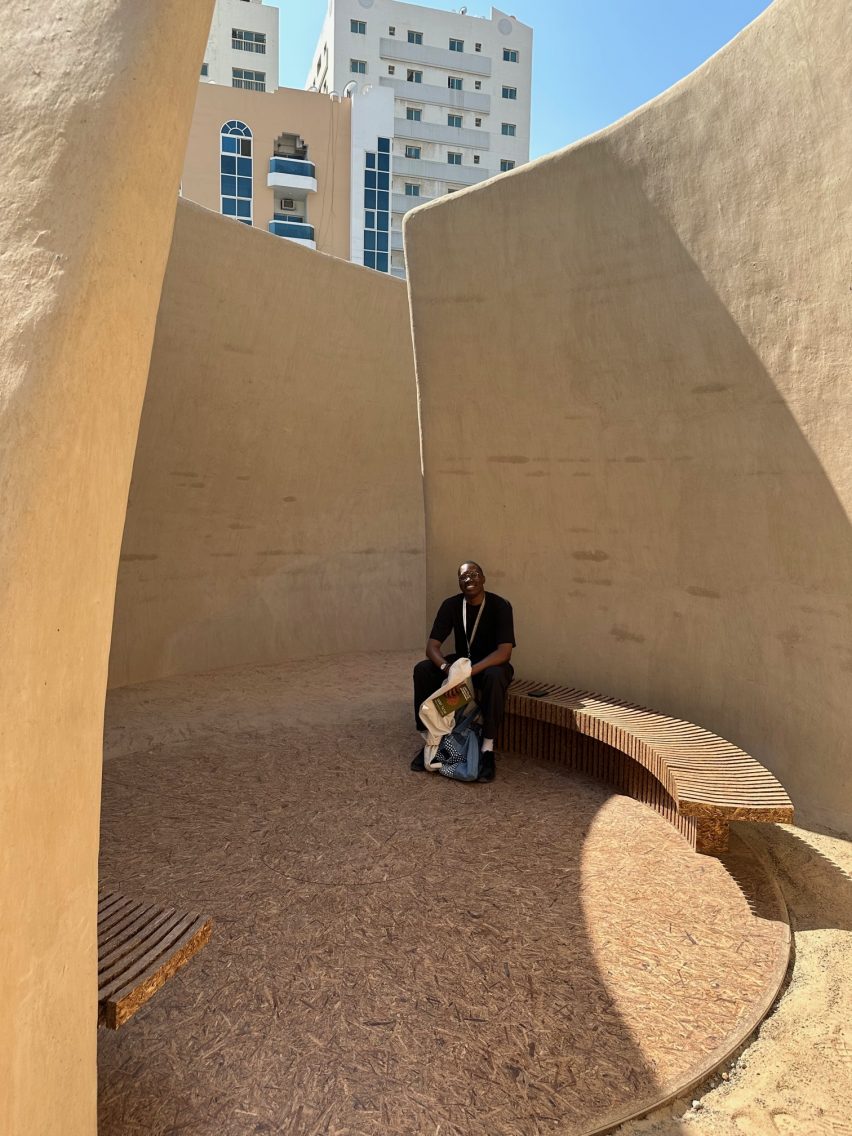
Part of the pavilion walls were left uncovered so that the mud brick construction could be seen.
10:30am Spotted! An installation by Marina Tabassum from the first Sharjah triennial in 2019.
The installation is a cluster of three prefabricated homes from the Bengal Delta in Bangladesh.
Since 2019, the project has been relocated to a site alongside the renovated school building that is now the triennial HQ.
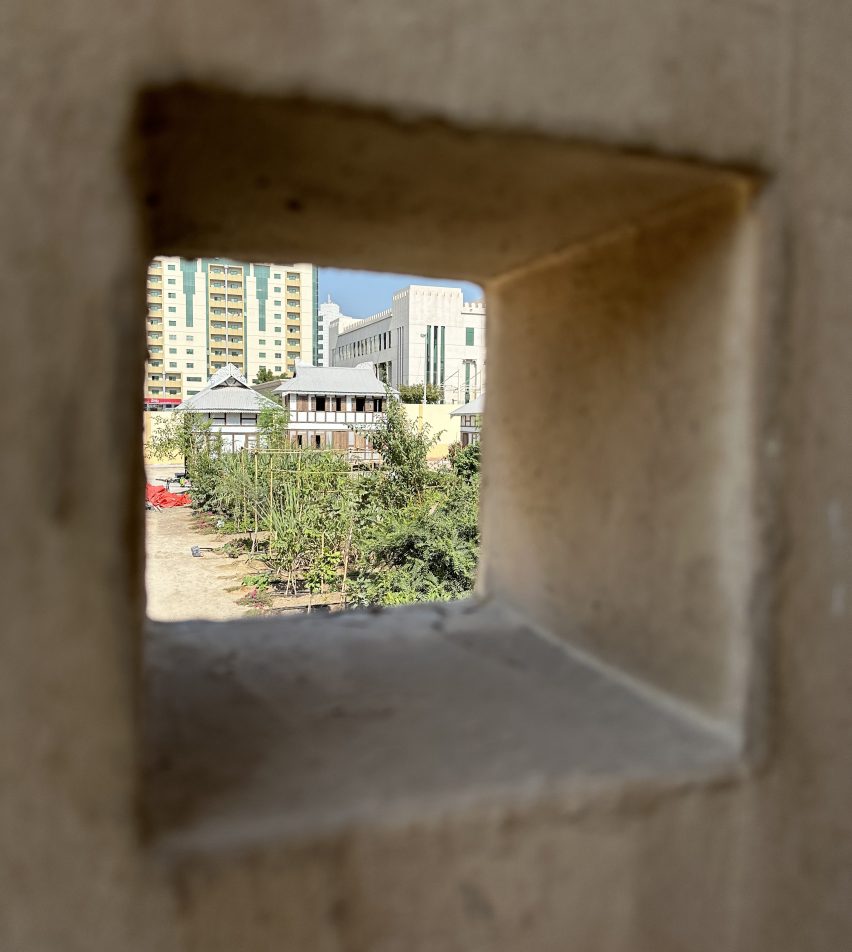
10:00am The triennial's original merch – the ubiquitous tote bag, and bucket hats – was made from 1,700 pairs of jeans. The jeans were sourced from bales of clothes sent to the country from western countries.
They were recycled and redesigned by Ugandan designer Bobby Kolade, who is the creative director of Buzigahill.
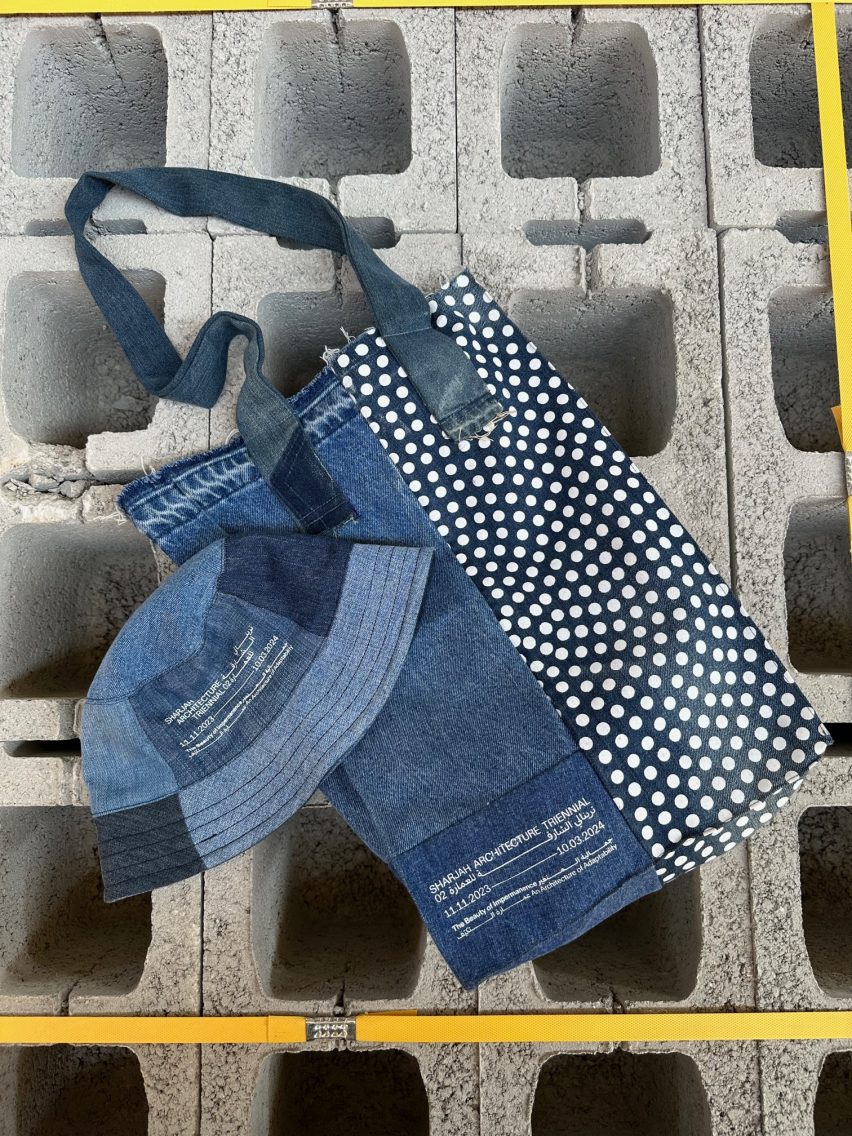
I haven't actually managed to get my hands on my own bucket hat – but am desperately hunting one as a gift for our bucket-hat-wearing Dezeen digital editor! – Tom Ravenscroft
9:30am All of the exhibition design has been created by Italian studio Space Caviar, which has used stacks of building materials to build seating and exhibition stands, writes Dezeen editor Tom Ravenscroft from Sharjah.
Following the triennial these will be dismantled and sold back into the construction supply system.
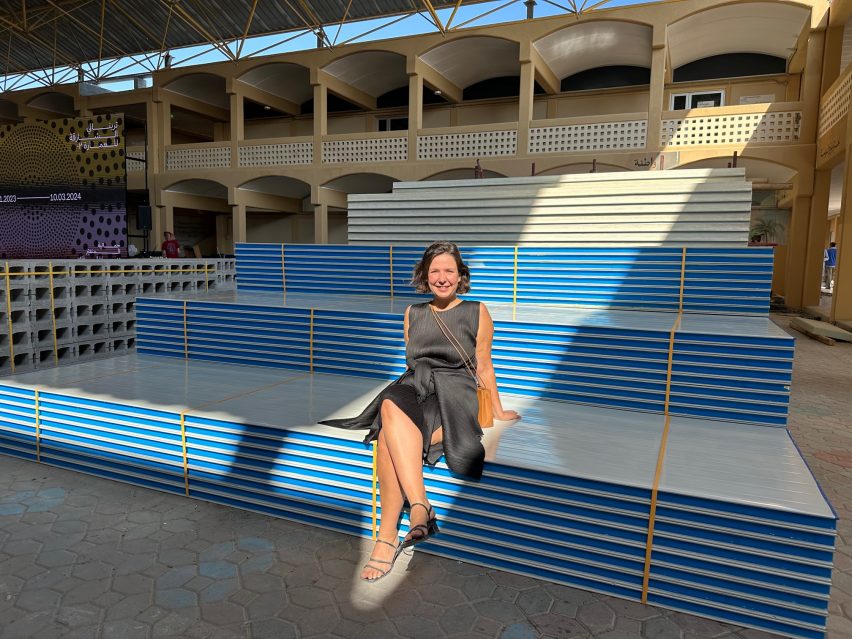
"When we first got to Sharjah we were really struck by how, in the areas surrounding building sites, there are these areas called industrial areas and within them, they have these towers of materials – there is a market for reusing them," Sofia Pia Belenky of Space Caviar told Dezeen.
"So we were really interested in this market and the way in which workers would hang out around these stacks of materials and use them almost as ready-made furniture," she continued.
"We wanted to bring that same energy and that same idea to the school here – and we basically developed relationships with contractors to borrow the materials which they will use afterwards, for future projects."
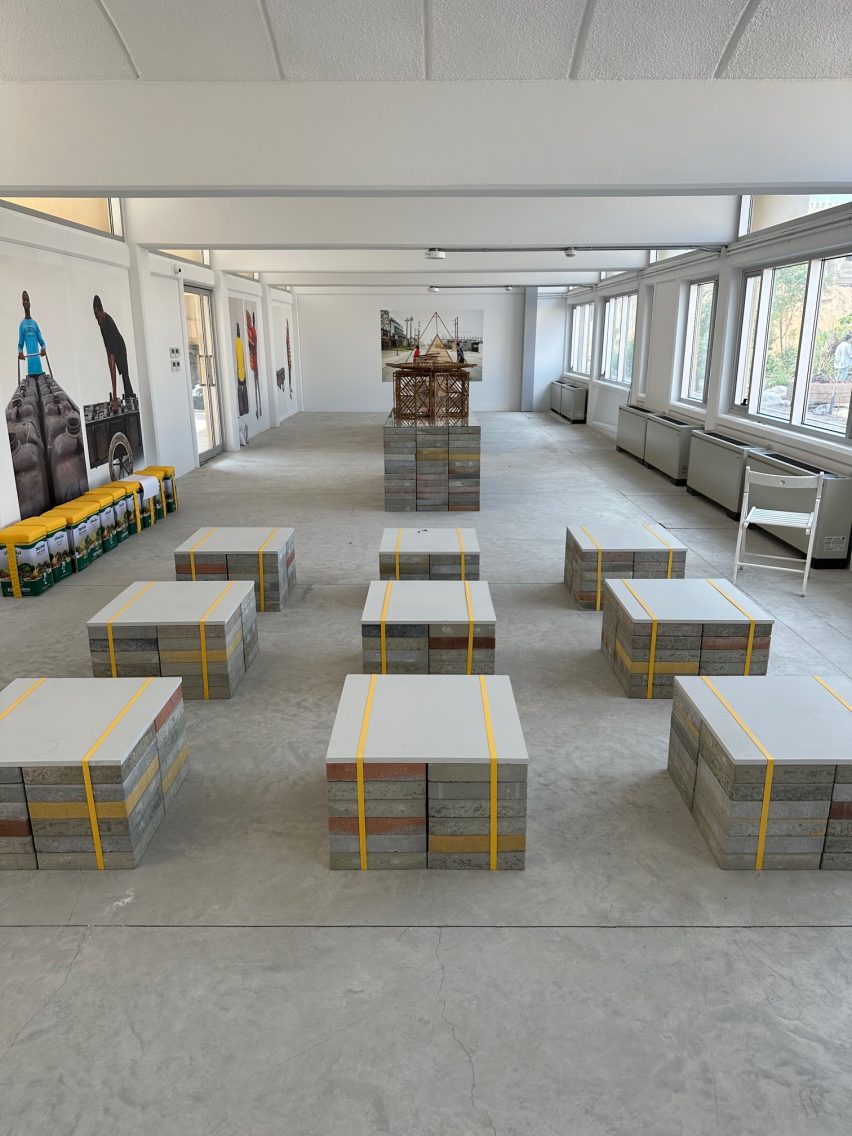
9:00am Curator of this second edition of the Sharjah Architecture Triennial, Nigerian architect Tosin Oshinowo, has opened the triennial – titled The Beauty of Impermanence: An Architecture of Adaptability – by explaining the core idea of the festival and its focus on designs born of scarcity from the Global South.
The goal of the triennial is to draw attention to "design and technology visible in the Global South," she said.
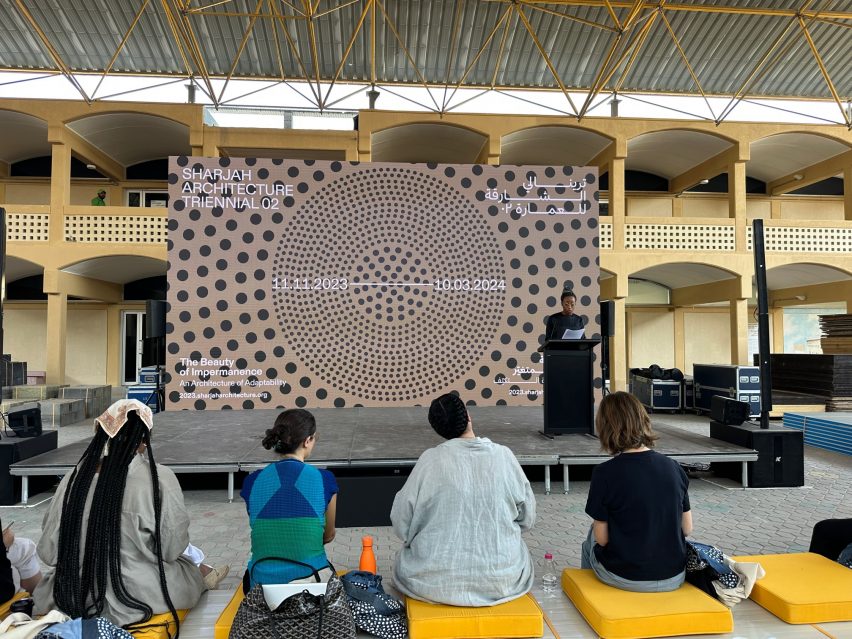
"The last 30 months refined my thoughts on the second Sharjah Architecture Triennial. The Beauty of Impermanence: An Architecture of Adaptability is a metaphor that draws attention to the built environment's design and technology visible in the Global South – these solutions are about conditions of scarcity that are working within the limitations of natural resources available."
Lagos-based Oshinowo is principal of the architecture studio Oshinowo Studio and has become known for socially responsive architecture projects across Nigeria.

She was co-curator of the Lagos Biennial in 2019 and was a Dezeen Awards 2022 judge.
Read more about Tosin Oshinowo's appointment as curator for Sharjah Archiecture Triennial 2023 ›
8:00am Dezeen editor Tom Ravenscroft is attending the official preview of Sharjah Architecture Triennial 2023 today, 10 November, in the United Arab Emirates.
The festival features installations and exhibits from Cave Bureau, Wallmakers, Asif Khan, 51-1 Arquitectos, Formafantasma and Space Caviar among others.
The two main venues for the festival are a former school that was built in the mid 1970s and a former fruit market that was built in the early 1980s.
Both buildings are examples of the architecture that was created in the emirate in the years after gaining its independence in 1971. In anticipation of the inaugural triennial in 2019, they were purchased by the organising foundation as part of a campaign to conserve the emirate's 1970s and 80s architecture, which is increasingly under threat of demolition.
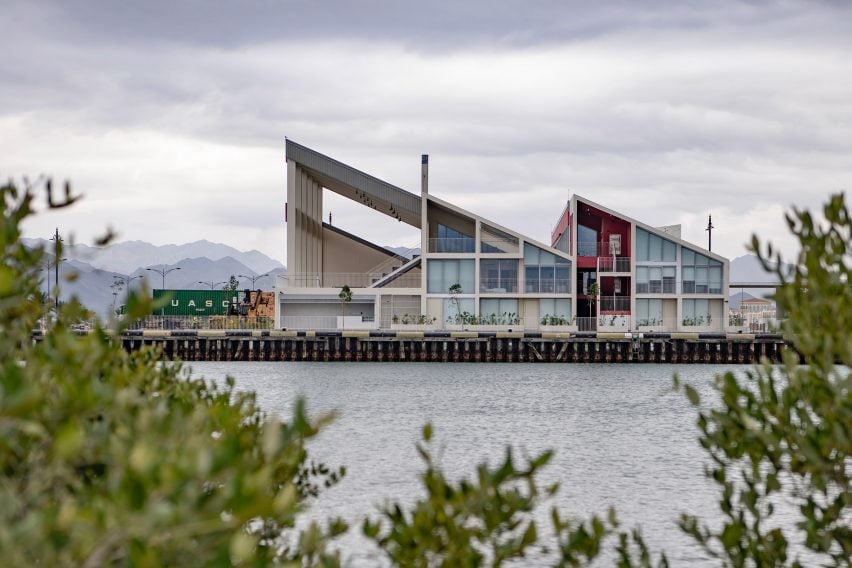
"The foundation wants to keep all the layers in the city – including the 1970s and 80s," said Mona El Mousfy at the time, who is the architecture consultant for the triennial and partner organisation the Sharjah Art Foundation, which has also been purchasing buildings from the era.
Since then, Peruvian studio 51-1 Arquitectos has converted a 1970s ice storage facility into a cultural venue, restaurant and hotel for the Sharjah Art Foundation.
See Dezeen Events Guide for all the latest information you need to know to attend the event, as well as a list of other architecture and design events taking place around the world.
All times are London time, from where digital editor Rupert Bickersteth is running this live feed at Dezeen HQ.
The lead image is by Tom Ravenscroft.